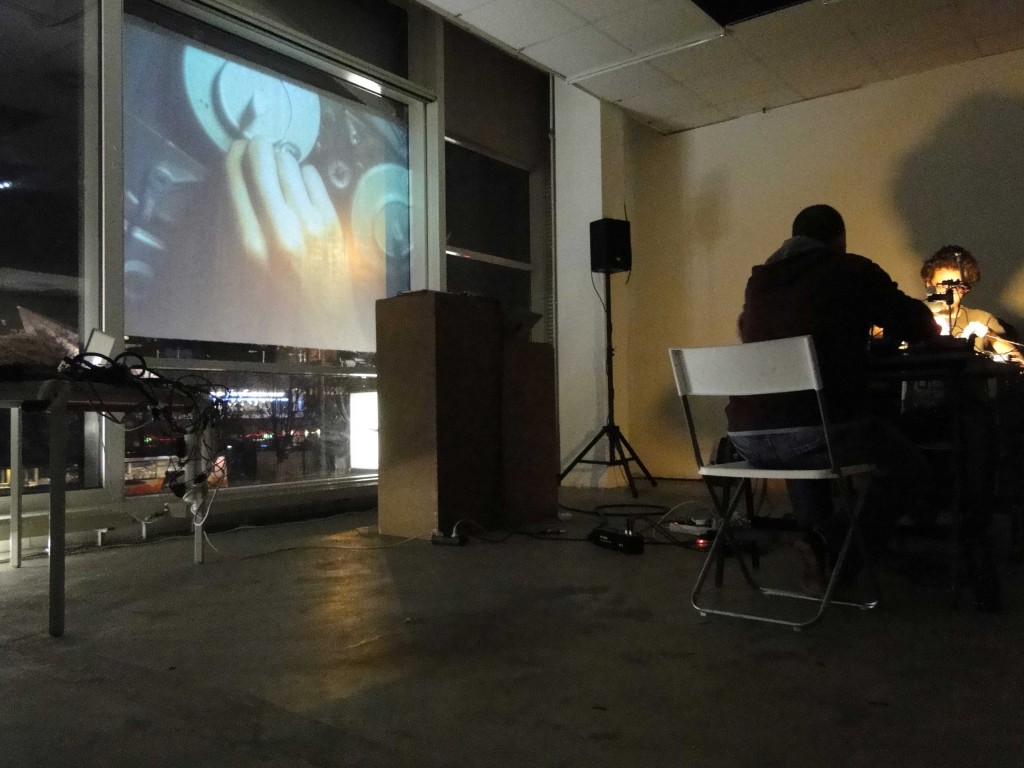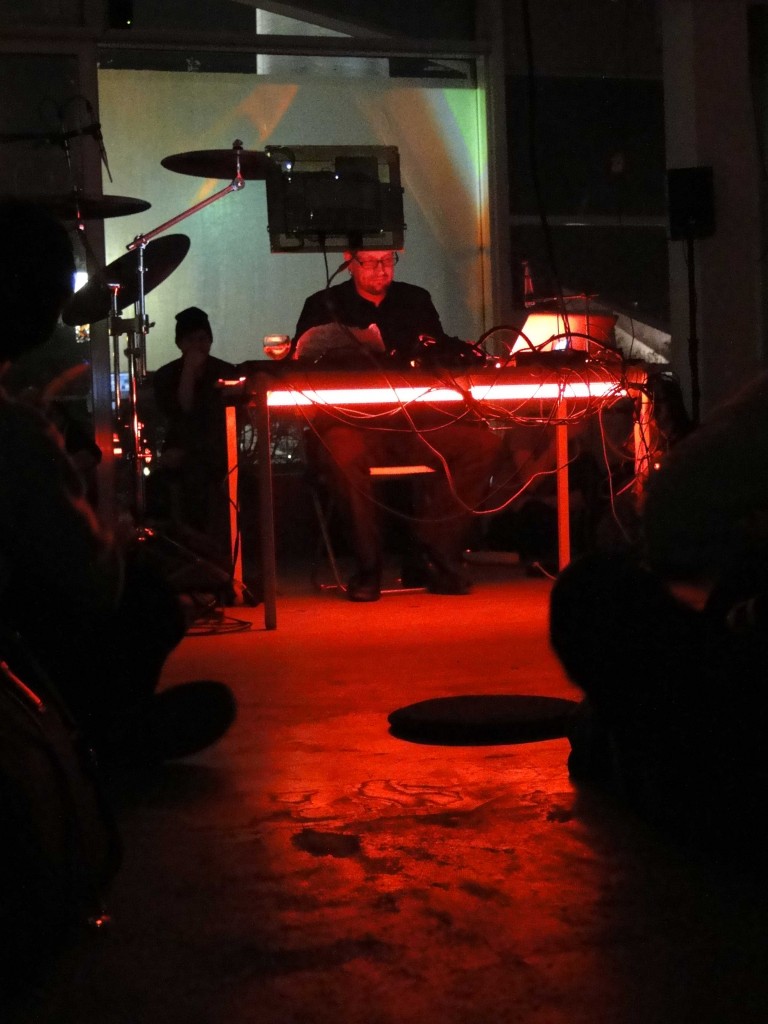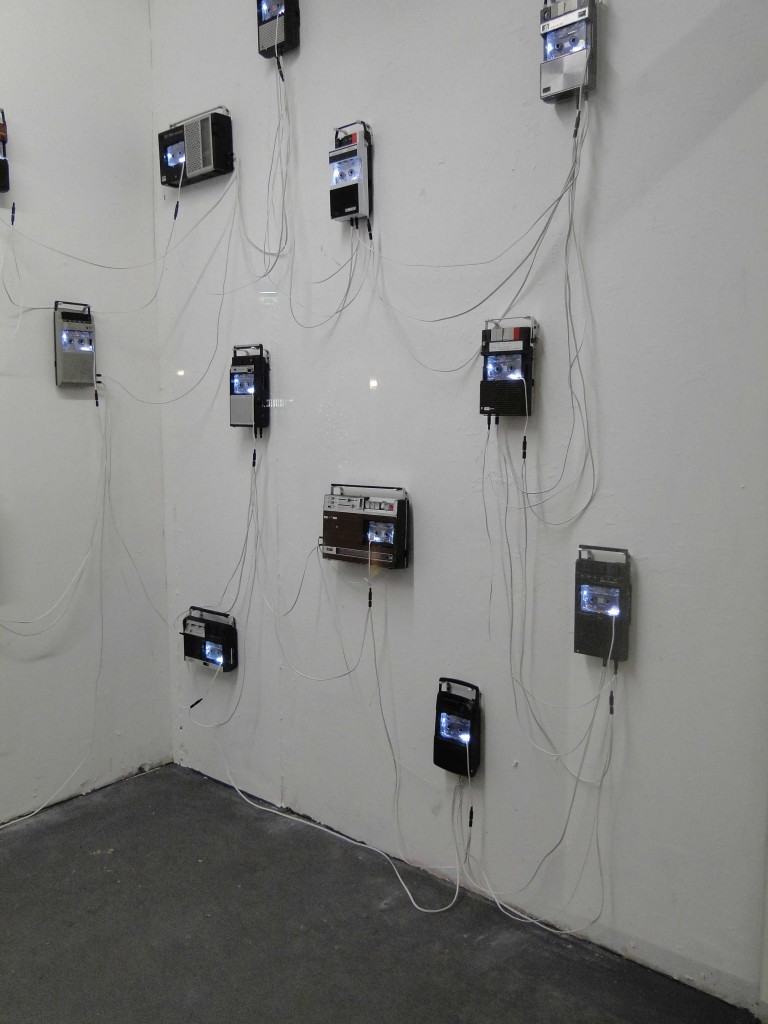Last Saturday LEAP, the Lab for Electronic Arts and Performance, launched a new bi-monthly series called Body Controlled, presenting artists dedicated to performance art and exploring sound using electronics and other art forms. For its first installment titled, Other Spaces, the artists used the dynamic of preexisting architecture and virtual spaces as a point of departure for work on display through December 2, 2011. Highlights of Saturday’s inaugural event included Robert Henke’s twelve-hour installation/performance, Microsphere. Well known within both academics and club culture Henke has been involved in negotiating the evolution of computer based music for decades and helped pioneer today’s standard software for live performance, Ableton Live. While I only stayed for the first two hours of his set visitors were welcome to pass by until mid-morning the next day, breakfast was apparently served in the final hours. During the time I was present I took notice of Henke’s peaceful performance demeanor, the invisible anxiety that permeates most was non-existent. His expert execution allowed sounds to develop within the space breaking down typical audience-performer barriers. Focus returned to the audience and the space as Henke took short smoking breaks and even ate some grapes while he played at what looked like a recording station from the future. Massive cabling protruded from the back of a desk that was under lit by a florescent red tube and a carefully rigged computer screen floated, suspended from the ceiling. Fluctuating between listening to the development of sound, Henke added various traditional and non-traditional instruments to the mix and their play back became part of a developing new sound and spatial atmosphere.
Henke translated the present space through sound but the rest of the performances explored sounds of other spaces bringing prerecorded environments and objects into the mix. Peter Kirn used preexisting recordings from various locations and samples of piano that were played back through digital tools. Hardware based performance duo, Stephen Cornford and Paul Whitty deconstructed the sounds of a reel-to-reel tape recorder and various other obsolete machinery in an operation-like performance. Piece by piece the equipment continued to play until the duo deteriorated the mechanics beyond playability and thus ended the performance. Stephen Cornford also presented a sound based installation in the front window of LEAP. Binatone Galaxy is a series of old tape recorders, wall mounted in random formation that play hacked tape cassettes. The result is a symphonious sound wall amplifying each machine as it works. Motion sensors vary the composition by stopping the tape players whenever a person gets close. This seems to tease the viewer who is forced to stand back and listen from a distance while being tempted to get close and hear the noise of each player.
In a stairwell leading up to the second floor (and an amazing view of Berlin’s Fernsehturn) a site responsive piece called Volume by Robert Mathy amplifies the noise of the infrastructure. A series of small motors are attached to various objects and a small metal spike on each one hits the surface of the object. The noises they produce are spread out over the space and create a sound composition from the architecture. The experience was really playful and reminded me of being a kid, exploring the sound of objects in your proximity. Somehow the environment also started to feel cavernous. Anticipating the possibility of sound seemed akin to moving through a dark space and waiting for visual cues to guide your way. While standing still, the installation produced new depths and its time based evolution made your ears wander. The event, Other Spaces, on a whole could be said to be working towards this same sensation. While we remained at LEAP the sounds presented therein brought us to new spaces.




 RSS
RSS
